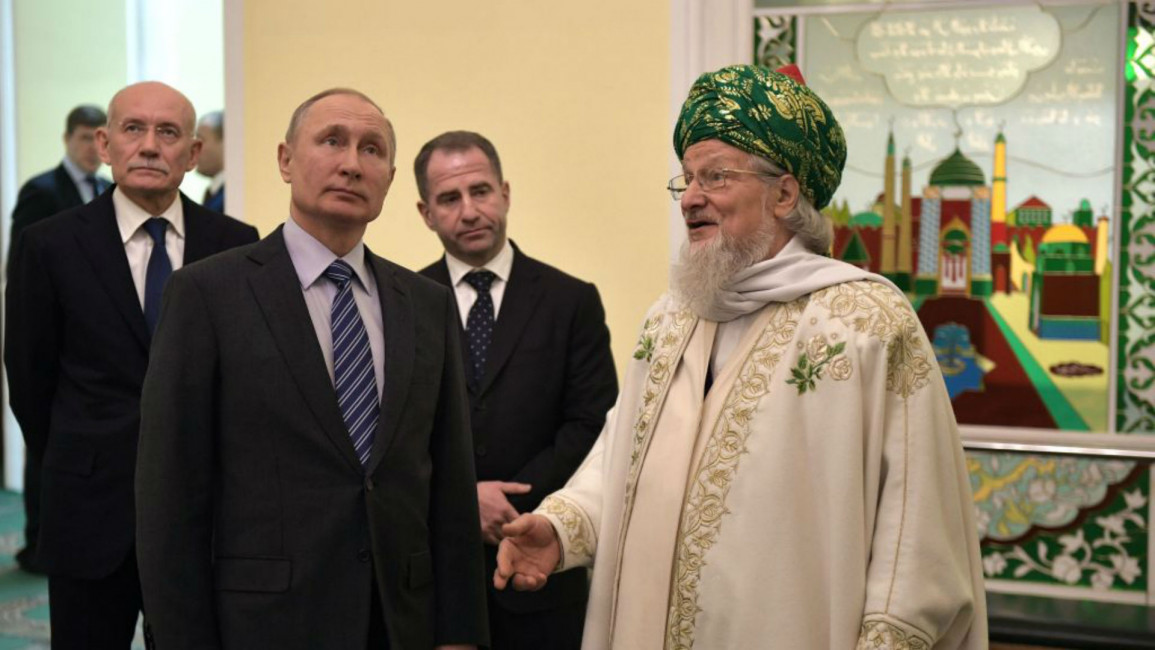
A journey into Russia's Muslim heartlands
But as Dominic Rubin's new book shows, Islam in Russia and Central Asia is thriving, multifaceted and diverse. ‘
'Russia's Muslim heartlands: Islam in the Putin Era' is a broad survey of Russian and Central Asian Muslims from Tartar Artists, Kyrgyzstani sheikhs, Chechen Sufis to Muscovite Salafists.
Muslims make up 10-15 percent of the Russian population and according to Rubin, Moscow could be the largest Muslim city in Europe in terms of the number of Muslims who live there (if you exclude Istanbul from Europe).
Rubin, professor of Religion and Philosophy at the Higher School for Economics, Moscow, has spent the last few years travelling across Russia and Central Asia to capture the diversity of the Muslim experience in post-Soviet world.
The historic relationship between the Russian state and Muslim populations is a complex one; there is a long history of tolerance, acceptance, oppression and violence.
When Lenin wanted to win over the Muslims of the Caucasus, writes Rubin, to support the Russian revolution, he took his famous slogan "Land and Freedom", and changed it to, "Land and Sharia".
 |
These contradictions between generations make the book a fascinating read |  |
At the time of the Russian revolution, various religious reform movements or "Jadids" had sprung up across the Caucasus, including "Red Jadids" which fused Communism with Islam.
However, soon after Lenin took control of the state, he reneged his support and suppressed the Red Jadids. The Soviet state tended to discourage religion and sometimes violently suppress it, but it did allow the construction of a large mosque in Moscow, and for Muftis (Muslim religious scholars) to operate from it. This served to show foreign diplomats and dignitaries from Muslim countries the tolerance of the communist Empire.
Everyday Islam - much like everyday Christianity - was forced underground during Soviet times, and this had the effect of cutting off Muslims in the Soviet Union from their traditional culture and religion. The fall of the Soviet Union enabled people from all religions to "rediscover" their heritage, religion and culture.
 |
|
Canadian philosopher Charles Taylor wrote in 'A secular age' that secularism did not banish religion from the public sphere in the West, rather it had the curious effect of pluralising the spiritual options on offer. Reading Rubin's study, it's clear that contemporary Russia has unintentionally undergone the same sociological secularisation as the West.
Upon the collapse of the Soviet Union not only were Muslims trying to rediscover their own religion, but also actively explored other religions and spiritual options too.
In many regions of Russia, interfaith marriage is common, and many non-Muslim Russians claim heritage from Muslim ethnic groups. Even in Tsarist Russia which was fiercely Orthodox Christian, wealthy families proudly boasted about their Tartar origins and the close affinity between Russian and Tartar peoples.
An example of how this spiritual pluralism plays out in contemporary Russia is the story of Farit, a Tartar Muslim artist who Rubin spends time with.
In his early years he was non-religious and married a half-Indian woman, with whom he had a daughter. His daughter joins the Orthodox Church and Farit attends his granddaughter's christening.
Farit however, goes in the opposite direction and re-embraces Islam, becoming an active member of his Sufi lodge. Stories like Farit's are not uncommon. Rubin also encounters a Christian father looking for a Muslim wife for his son, because he likes "eastern values".
There is however a note of caution here about romanticising the Russian state's role - both past and present - in facilitating such spiritual pluralism. The Russian state has always been authoritarian; the reason for the diversity in Russia is simply that the sheer size of the country means a large number of ethnic and religious groups inevitably find themselves within the country's borders.
The pluralism described is largely a bottom-up rather than top-down phenomenon.
Indeed, the attitude of the Russian government towards Islam is not straightforward. The Russian state shares an anti-terror discourse similar to that of its western counterparts.
 |
Paranoia from the Soviet era that sees religion as a dangerous subversion, still lingers in the minds of many |  |
A Muslim man who grows a beard and starts praying can come under suspicion for being a 'Salafist' which is often confused with radicalisation by security forces.
Some older Muslims are also alarmed by the rising open religiosity of younger Muslims, as paranoia from the Soviet era that sees religion as a dangerous subversion, still lingers in the minds of many.
These contradictions between generations make the book a fascinating read. It is clear that discussions on Muslims in Europe cannot afford to overlook the experiences of Muslims in Russia, as some of the discourse and debates parallel our own.
Usman Butt is a multimedia television researcher, filmmaker and writer based in London. Usman read International Relations and Arabic Language at the University of Westminster and completed a Master of Arts in Palestine Studies at the University of Exeter.
Follow him on Twitter: @TheUsmanButt





 Follow the Middle East's top stories in English at The New Arab on Google News
Follow the Middle East's top stories in English at The New Arab on Google News


